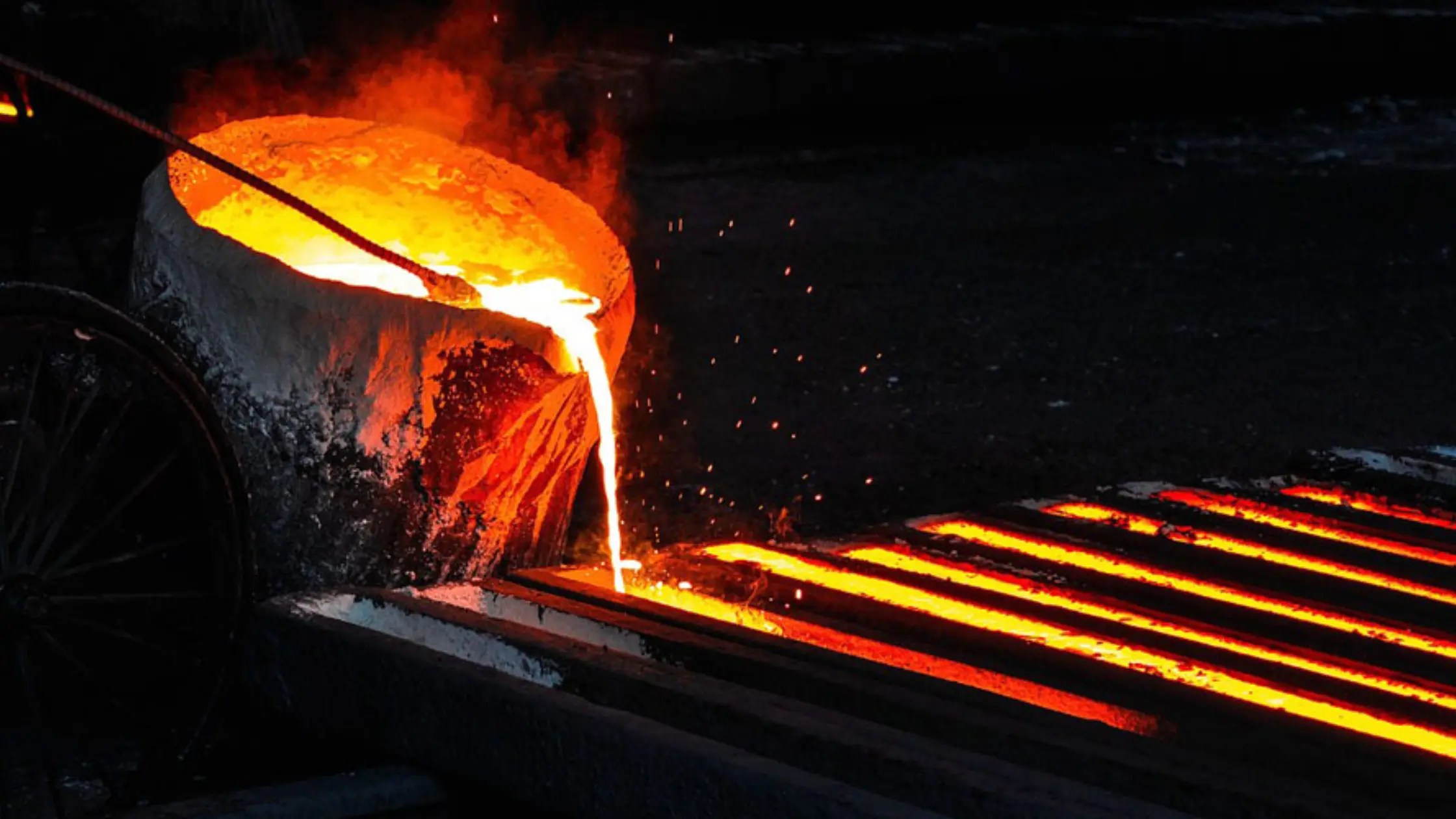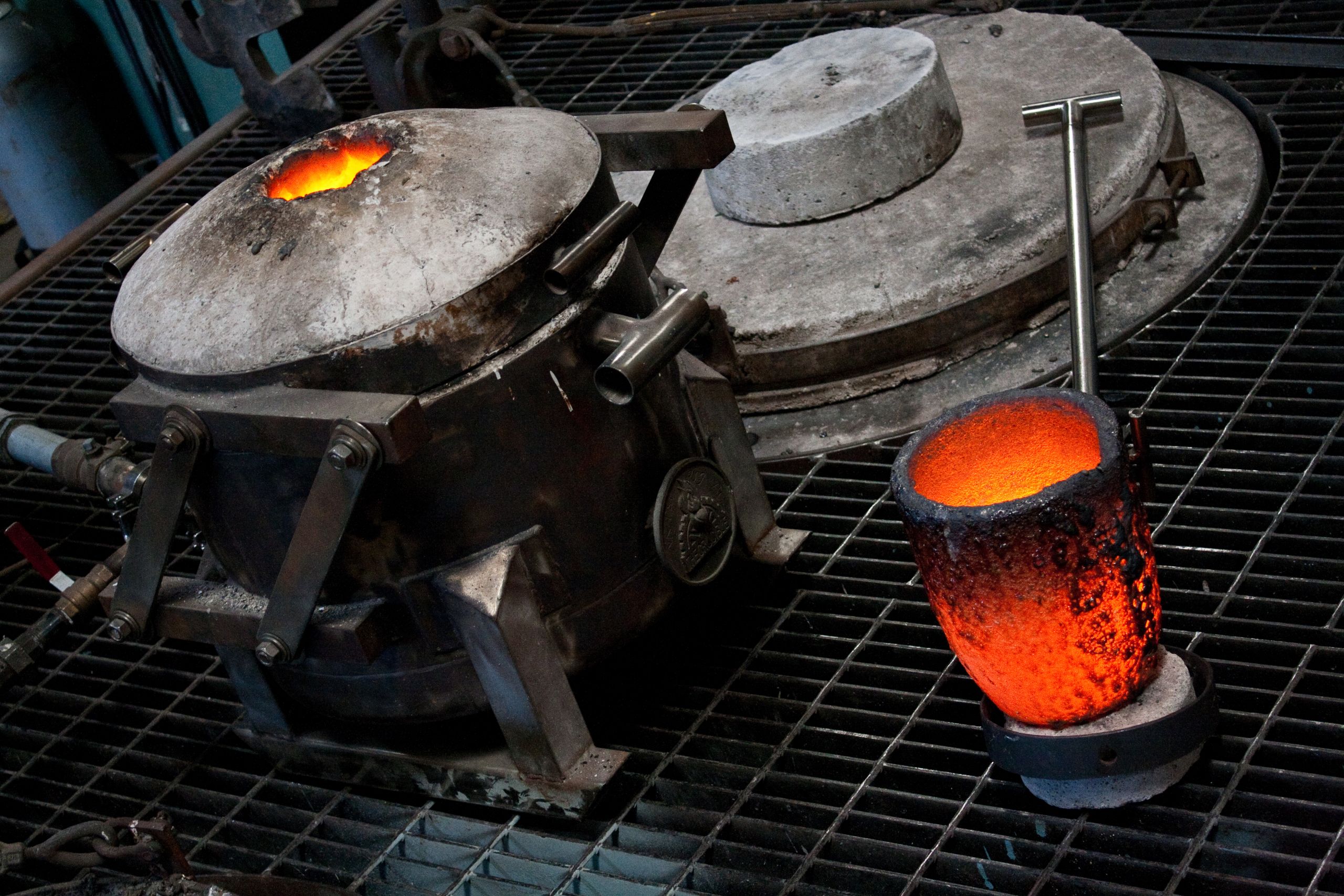Wisconsin Aluminum Foundry: driving excellence in metal casting solutions
Wiki Article
The Function of Metal Casting beforehand Production Technologies
Metal Casting have actually significantly influenced the advancement of producing modern technologies. They supply special design adaptability, allowing the development of elaborate geometries vital for various applications. Modern spreading strategies are being boosted by developments like 3D printing and automation. These developments not just improve performance but additionally address challenges in precision and sustainability. As sectors proceed to evolve, the duty of Metal Casting remains essential fit their future. What exists ahead in this dynamic field?The Evolution of Steel Casting Methods
As the need for accuracy and performance in production has expanded, the evolution of Metal Casting techniques has actually undertaken significant makeover. Historically, Metal Casting began with basic methods such as sand spreading and lost-wax casting, which enabled craftsmens to develop intricate shapes. With time, improvements in modern technology introduced processes like die spreading and financial investment spreading, improving accuracy and reducing waste. Metal Castings. The introduction of computer-aided style (CAD) and simulation software application transformed the drawing board, allowing makers to expect potential issues and optimize designs before manufacturing. In addition, the development of new materials, such as advanced alloys and composites, has widened the extent of applications for Metal Casting. Automation and robotics have more polished spreading procedures, enhancing uniformity and effectiveness. As an outcome, the Metal Casting sector has actually adjusted to fulfill the needs of modern production, concentrating on sustainability and innovation to remain affordable in an ever-evolving marketplace
Applications of Metal Casting in Secret Industries
The innovations in Metal Casting techniques have opened up a broad range of applications throughout numerous markets. In the auto industry, Metal Casting are integral for producing engine blocks, transmission real estates, and other important components that require high toughness and longevity. The aerospace industry uses castings for detailed parts like turbine blades and architectural elements, guaranteeing lightweight yet durable remedies for aircraft.
The building market utilizes Metal Casting for structural elements such as beam of lights and fittings, contributing to the stability of structures and framework. In the power market, spreadings play a crucial function in producing elements for wind turbines and power generation devices, improving effectiveness and reliability. Furthermore, the medical area take advantage of accuracy castings used in medical tools and prosthetics, showing the convenience of Metal Casting throughout diverse applications. This broad application underscores the importance of Metal Casting in contemporary manufacturing techniques.
Benefits of Metal Casting in Modern Manufacturing
Metal Casting offer countless advantages that significantly boost contemporary manufacturing processes. One crucial advantage is style versatility; Metal Casting permits the creation of intricate shapes and intricate geometries that are usually tough or impossible to achieve with other manufacturing approaches. This capability enables makers to enhance product layouts for performance and efficiency.In addition, Metal Casting can sustain a vast array of products, including aluminum, steel, and iron, which can be tailored to meet particular mechanical residential or commercial properties and rust resistance demands.

Cost-effectiveness is an additional significant benefit; Metal Casting processes can produce big quantities of parts with marginal product waste, consequently decreasing production costs.
The longevity of actors steel components contributes to the long life of products, lowering the need for frequent replacements. Generally, the benefits of Metal Casting considerably add to efficiency, sustainability, and advancement within modern-day production atmospheres.
Advancements Driving the Future of Metal Casting
While typical Metal Casting methods have actually served the sector well for years, current advancements are positioned to revolutionize the field. Developments such as 3D printing modern technology permit quick prototyping and the manufacturing of intricate geometries that were formerly unattainable. These advancements not only improve design versatility yet additionally minimize waste and reduce lead times. On top of that, the combination of automation and robotics in casting procedures is improving procedures, enhancing precision, and improving worker security. In addition, the advancement of composite products and new alloys is allowing the creation of stronger, lighter castings tailored for specific applications. Digital technologies, consisting of expert system and artificial intelligence, are maximizing about his spreading parameters and anticipating maintenance, driving enhanced top quality control. Collectively, these advancements are pushing the limits of Metal Casting, cultivating higher efficiency and sustainability in manufacturing, and placing the market for future growth and competitiveness.Obstacles and Solutions in Metal Casting Processes
As innovations in Metal Casting modern technology continue to reshape the sector, different challenges stay that makers have to deal with to totally take advantage of these technologies. One substantial problem is the irregularity in product residential or commercial properties, which can cause inconsistent top quality and performance. This variability often arises from variations in raw materials and handling problems. Furthermore, the increasing costs of energy and products present monetary constraints, browse around this web-site pressing suppliers to seek much more efficient procedures.To deal with these difficulties, companies are increasingly adopting automated systems and progressed simulation methods to enhance accuracy and uniformity. Executing high quality control measures throughout the production process also aids in detecting defects early. Investing in research for alternate materials might improve and lower costs sustainability. By addressing these difficulties with cutting-edge options, the Metal Casting sector can improve performance and keep competitiveness in the developing production landscape.
Frequently Asked Concerns
What Products Are Typically Made Use Of in Steel Casting Procedures?
Common materials utilized in Metal Casting procedures consist of aluminum, bronze, magnesium, and iron. Each product possesses one-of-a-kind residential or commercial properties that deal with various applications, enhancing the adaptability and functionality of the final actors products in various markets.Just How Do Ecological Rules Effect Metal Casting Operations?
Environmental regulations compel Metal Casting procedures to take on cleaner modern technologies and techniques, typically boosting manufacturing prices. Conformity might bring about innovative procedures that minimize waste and discharges, ultimately advertising sustainability within the Metal Casting market.What Are the Safety And Security Measures in Metal Casting Facilities?
Precaution in Metal Casting facilities include correct air flow, individual safety devices, normal safety and security training, tools upkeep, and adherence to safety and security guidelines, making certain a secure environment for employees while decreasing dangers connected with dangerous materials and processes.Just How Is Quality Controlled in the Steel Casting Refine?
Quality assurance in Metal Casting involves extensive inspections, consisting of visual analyses, dimensional checks, and material screening. Adherence to industry standards and carrying out top quality management systems ensures that spreadings fulfill specific requirements throughout the manufacturing process.
What Is the Future Task Outlook for Metal Casting Professionals?
The future job outlook for Metal Casting experts shows up promising, driven by advancements in innovation and enhancing need across different sectors (Wisconsin Aluminum Foundry). Growth in automation and lasting techniques will likely create brand-new opportunities in this sectorHistorically, Metal Casting started with basic approaches such as sand spreading and lost-wax spreading, which enabled artisans to produce complex forms. Over time, improvements in innovation presented procedures like die spreading and investment spreading, boosting accuracy and reducing waste. In addition, the medical field benefits from precision castings made use of in surgical tools and prosthetics, showing the versatility of Metal Casting across diverse applications. Metal Casting offer many advantages that considerably improve contemporary production processes. Typical materials Read More Here utilized in Metal Casting procedures consist of light weight aluminum, bronze, iron, and magnesium.
Report this wiki page